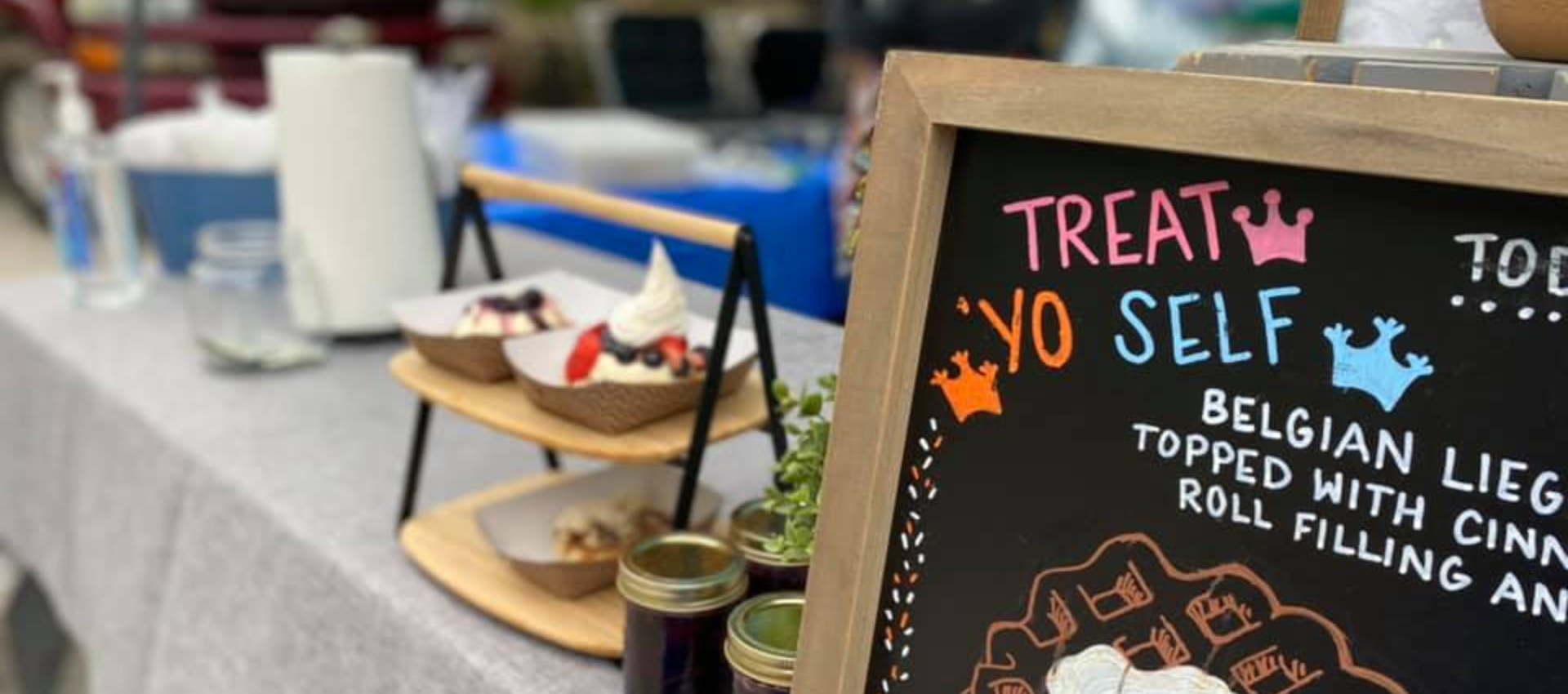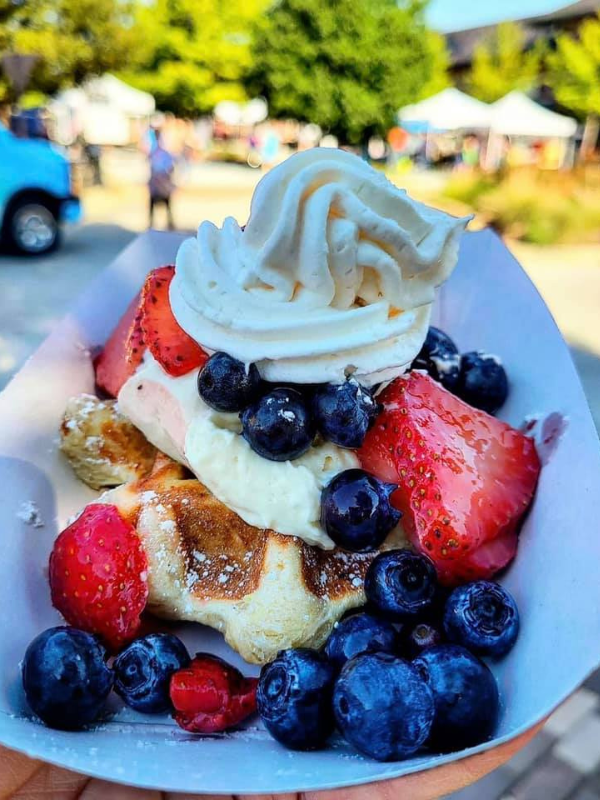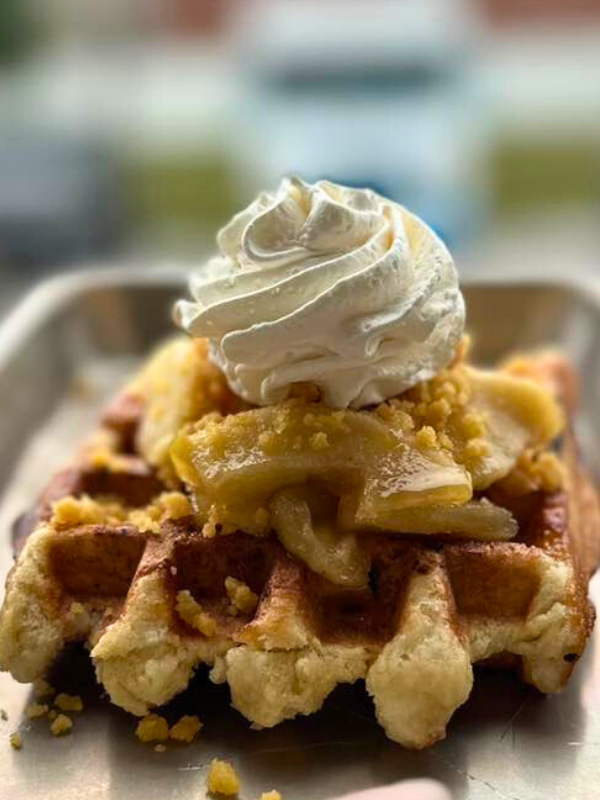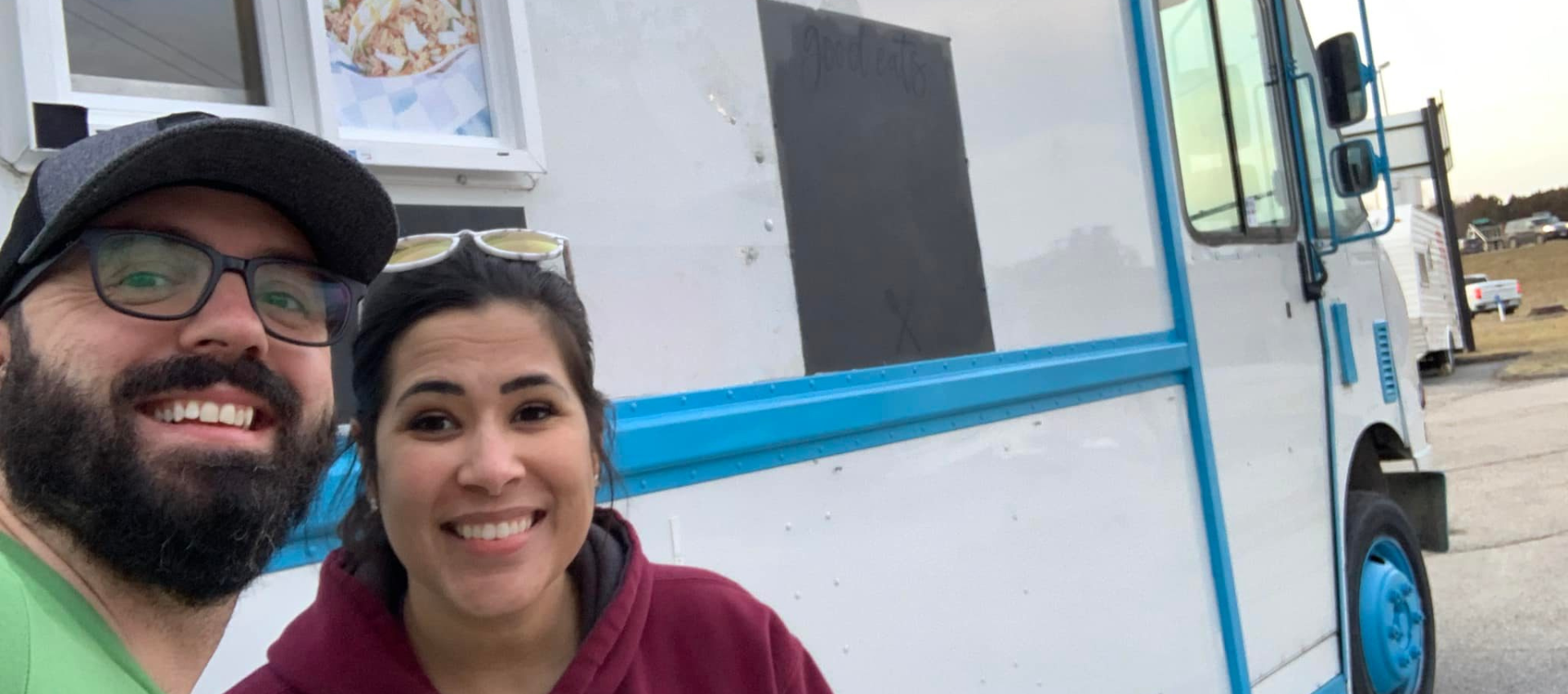Griddle me this: Lessons from a waffle truck entrepreneur
June 11, 2025 | By Chris Mullen
|
about In Tech In Tech is our regular feature highlighting what people are talking about in the world of technology — everything from crypto and NFTs to smart cities and cybersecurity. |
“What kind of food do you want to smell like after every shift?”
That was my big question. The one piece of wisdom I offered as my wife Sara and I sat in a mostly empty café, tossing around ideas about opening a food truck. “Buttery caramelized dough” wasn’t the worst answer.
I used to joke that I needed to get rich off Sara’s cooking. She was untrained, but in my mind, a culinary genius. We’d long dreamed of starting a food truck but had no idea what we were doing.
So that night in the café, we decided it was time to stop waffling and make some decisions.
Which of course led us to decide on waffles! But not just any waffles: We would specialize in Liege-style waffles. These are a type of Belgian waffle made with a brioche-like yeast dough and packed with sugar pearls. When they hit the waffle iron, the pearls on the outside caramelize and crisp up, while the ones inside partially melt, then re-form as they cool. The result is a waffle that’s golden on the outside and filled with sweet, chewy pockets on the inside.
To make it our own, we would focus on toppings and gave everything ridiculous names rooted in pop culture and inside jokes. Our menu eventually consisted of items including The Cap — red (strawberry), white (cheesecake and whip), and blue (blueberry). The 99 (based on the TV show “Brooklyn Nine-Nine”) came with Nutella and strawberries, and every time it was ordered, the whole truck yelled “Nine-nine!”


Another big decision that night was how to start. We didn’t want to go all in without knowing what we were doing, so we planned to start small, learn as we went and grow if it made sense. It felt like how progression works in a video game — start with basic gear, take on manageable quests and level up with experience. So instead of jumping straight into a food truck, we decided to test things out with a pop-up tent at the local farmers market. If it worked, we’d use the revenue to fund the truck and keep things debt-free for as long as we could.
That night we even decided on a name for our business baby: WaffleNerds. Sara was the waffle. I was the nerd. It just made sense.
After working through licensing and permitting, we secured a temporary spot at a local farmers market. After all the planning and discussions about recipes, tent layout, pricing and setup, there we were. Standing in our assigned corner before dawn, rain-drenched but hopeful, setting up a booth we weren’t sure anyone would show up for. It was either the start of something cool or a very expensive breakfast for two.

Chris Mullen and his wife Sara take a selfie outside the Waffle Wagon, the truck housing their Liege-style waffle business. (Photo courtesy of Chris Mullen)
Friends and family showed up, but the aroma alone was enough to pull in the crowd. We sold out faster than expected and got invited back to the market the next week. The same thing happened again. And again. And again.
So video game logic prevailed once again. It was time to level up. We bought a Freightliner truck with way too many miles, not nearly enough equipment, and far more space than we needed. But it was within our price range. In the meantime, we secured a permanent spot at the market, and our budding business was about to take off. Every day, every event and every milestone showed us just how much more we had to learn.
When you run a small business, you have to become an "expert" in everything, or at least an expert at Googling and asking ChatGPT the right questions. Like how much power does a commercial waffle iron pull, and how many can you run on one plug? And for anyone who has spent a summer in Missouri, the real question is whether we can generate enough power for an air conditioner and do it economically. (Short answer: No.)
But the business was growing, and we had to keep up. That meant learning fast and leaning on technology to help us do more than we ever could on our own.
Starting with payments. I work for Mastercard, so accepting digital payments was a no-brainer. We went with Square because it was easy to set up, looked professional and let us start taking payments right away. Over time, I was surprised by how much the backend was able to handle — analytics, taxes, customer feedback and eventually even inventory. For a couple figuring it out as we went, that kind of simplicity was huge.
We leaned on AI tools more than I expected. Whether it was building a basic marketing calendar, rewriting a social caption, brainstorming waffle names and topping combinations or drafting customer emails, the starting point AI offered made everything less overwhelming. I even used it to get smarter about things I didn’t fully understand, like variable costs or diesel engines. It didn’t replace strategy, but it helped us move faster and sound more confident while we figured things out.
We built a website using GoDaddy, which made the whole process surprisingly painless. I dusted off some ancient SEO knowledge from a past life, and it worked. People wanted our Waffle Wagon at their events. And with GoDaddy’s system, I could track and manage those leads without too much difficulty.
But with that came managing the business schedule, which was a challenge for someone like me, who barely knows what day it is most of the time. So I leaned on what might have been the simplest tool in our entire setup: a shared Google Calendar. Nothing fancy. Just an easy way to keep track of events, prep days, deliveries and who needed to be where. The calendar kept us in sync without constant check-ins or missed details. It worked, it was free and it kept us moving.
We designed our graphics in Adobe Express, managed our communication through Microsoft 365, ran Square on our iPad, and used our phones to get the word out on social media.
Running this small business felt a lot like playing an open-world video game. There were constant distractions, endless side quests and plenty of ways to get lost or stuck. But the tools and processes we developed over those years acted as a map straightening out our paths. They didn’t make things easy, but they gave us direction. Just enough structure to keep moving, day after day, even when things got overwhelming.
The business was booming, maybe a little too much. After serving tens of thousands of customers, landing a few local news spots (for good reasons) and gaining some hometown notoriety, we hit a fork in the road as last season came to a close. The pace wasn’t sustainable. We could either double down, take on debt to grow, hire a team and overhaul everything — or scale back to the smaller, simpler version we imagined that night in the café.
And then a lot changed in our personal lives. Sara lost her father, her mother was diagnosed with breast cancer, our oldest child got married, and our youngest was soon graduating from high school. With so many life events happening at once, it made the decision to hit pause easier.
Stepping back gave us room to breathe and gain perspective. In the end, we chose to walk away, not because it was easy or exciting, but because it was right.
We don’t know what the future holds for WaffleNerds, but the lessons from that chapter were forged in stress, uncertainty and the occasional moment of panic — tempered by joy, creativity and a lot of laughter.
Looking back, I was always focused on leveling up the business. But in the process, I was the one who leveled up.